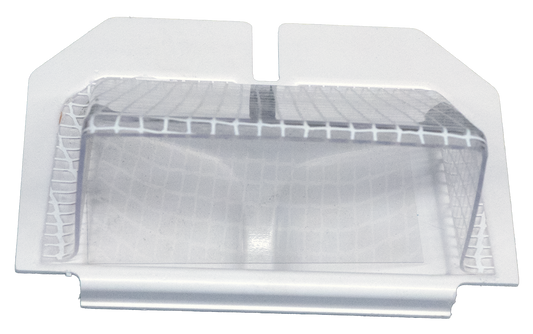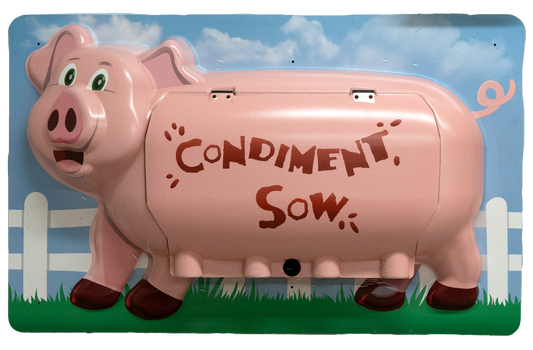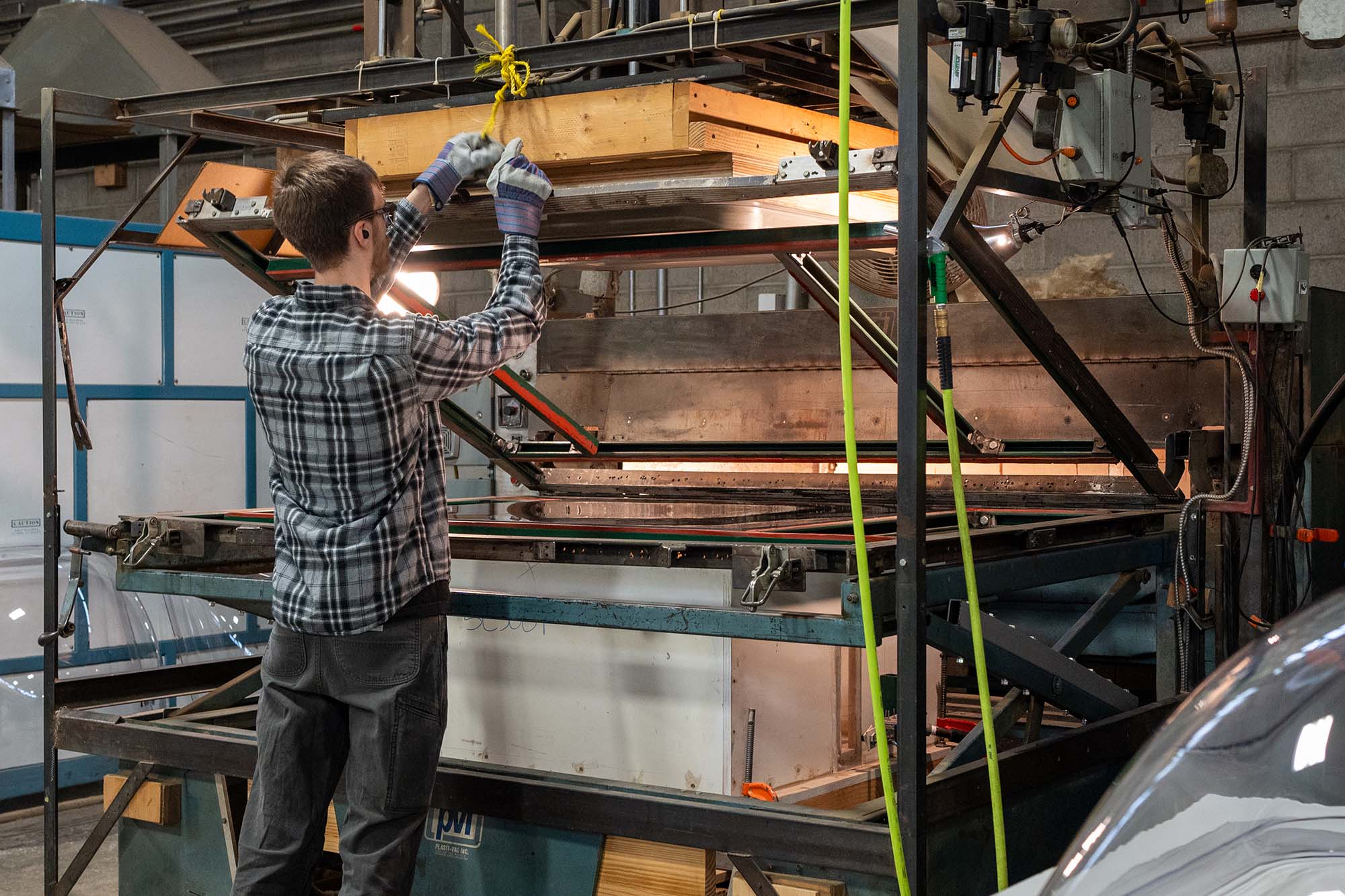
Thermoforming Service
Thermoforming is a straightforward process that begins with a flat sheet of extruded plastic. The plastic is heated until it becomes pliable, then shaped by either draping or drawing it over a mold to achieve the desired form.By incorporating templates, fixtures, and computer-controlled machining, the final product is not only highly functional but also visually appealing.
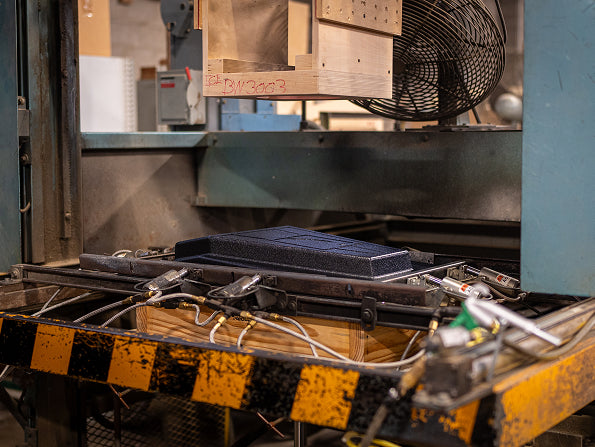
Standard Vacuum
Standard Vacuum Thermoforming utilizes a solid mold and vacuum pressure to create highly detailed shapes and designs.
The process begins with the raw material being secured within the forming machine’s frame, which automatically moves it into the heating bay to reach the optimal temperature. Once heated, the material is positioned over the mold, which is then raised into it. A vacuum is applied, pulling the material tightly against the mold to achieve the desired shape.
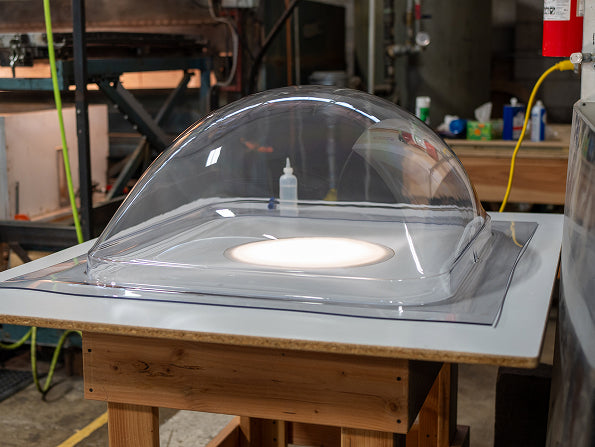
Free Form
Free Form Thermoforming is a specialized method that uses an open mold and vacuum to shape materials, making it ideal for applications where exceptional clarity is essential.
Developed through a proprietary process by Plastic Systems, Free Forming enables the creation of smoothly contoured shapes without direct mold contact. This preserves the optical clarity of the dome, achieving a level of transparency comparable to injection-molded domes—without the need for costly mirror-finish tooling. As a result, this method delivers high-quality clarity at a fraction of traditional tooling costs.
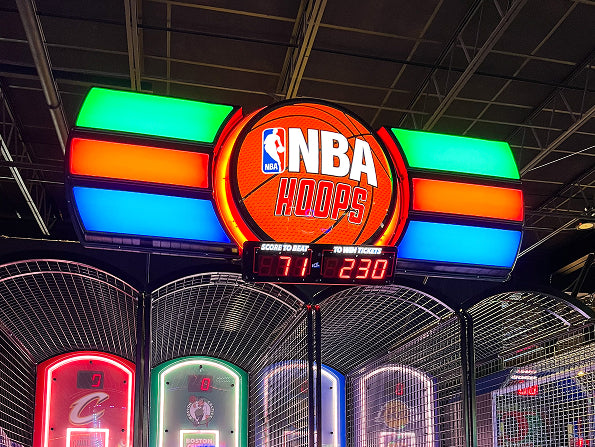
Distortion Print
Distortion Print Thermoforming follows the same process as Standard Vacuum Thermoforming but delivers a visually striking final product with an unparalleled "WOW" factor. This method enables high-resolution, full-color graphics to be seamlessly formed over a three-dimensional mold, making it ideal for eye-catching retail displays and marquees.
The technique gets its name from the process of adapting a two-dimensional image to a contoured surface. Since a flat image cannot naturally conform to multiple planes, it must be strategically distorted to align perfectly once the plastic is shaped. This becomes even more complex when accounting for the unpredictable nature of heated plastic.
Distortion Print Examples
-
Super Chexx Bubble Hockey Goal with Distortion Printed Net
Regular price $0.00 USDRegular priceUnit price / per -
Condiment Sow Distortion Printed Vacuum Formed Display
Regular price $0.00 USDRegular priceUnit price / per -
 Sold out
Sold outWack N Win Marquee
Regular price $0.00 USDRegular priceUnit price / per -
Distortion Printed Shark Head Form for Harpoon Lagoon Arcade Game
Regular price $0.00 USDRegular priceUnit price / per
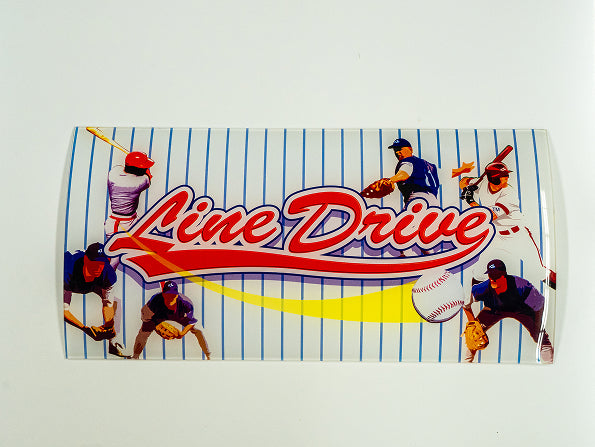
Drape Form
Drape Form Thermoforming is a process that relies on heat and gravity to shape material over a mold. Unlike other thermoforming methods that use vacuum pressure, this technique typically requires only the weight of the material itself to conform to the mold. In cases where additional shaping is needed, minimal pressure is applied during the cooling phase.
The process begins with a flat sheet of material, heated until pliable, and then gently draped over the mold. This method is particularly effective for producing large parts with simple contours. Whether you need a subtly curved display, a machine cover, or a custom aquarium or terrarium, Drape Forming provides an efficient and straightforward solution.
Strip Heat Bending
Strip Heat Bending is a straightforward and cost-effective method that uses a narrow heating element to create precise bends in plastic sheets. A pre-machined flat sheet is heated along a specific strip, allowing it to be bent at any desired angle.
This method is ideal for producing low to high quantities of products such as document holders, housings, or covers. Because it requires minimal—if any—startup or tooling costs, it is an efficient solution for simple yet functional designs.
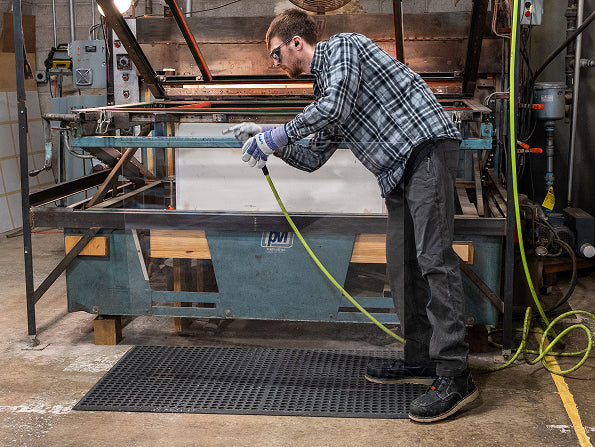
Thick & Thin Wall Thermoforming
Thick Wall Thermoforming refers to the process of forming plastic sheets with a thickness of 0.090” or more, allowing for durable, rigid components. This method is ideal for applications requiring strength, structural integrity, and longevity.
In contrast, Thin Wall Thermoforming involves forming plastic sheets that are significantly thinner, making it a preferred choice for lightweight, high-volume applications such as packaging, trays, and disposable products. This process enables cost-effective production while maintaining precision and detail.
While some companies specialize exclusively in either Thin Wall or Thick Wall thermoforming, Plastic Systems has the capability to manufacture products in any gauge, ensuring flexibility and customization to meet a wide range of industry needs.
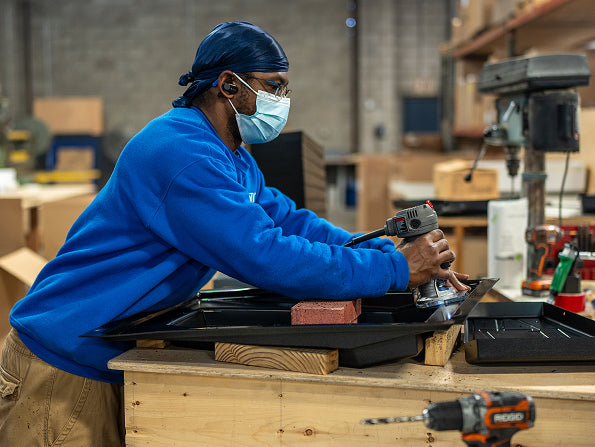
Packaging
If you need packaging for your product, we’re here to help. Whether you require a custom enclosure, retail casing, or POS packaging, we can design the perfect solution to fit your needs. For production that involves transporting individual small components, we can provide tailored transport trays to keep everything organized. Additionally, if your product needs a protective cover for shipping, we can create a container specifically designed to safeguard it during transit. Let us help you find the ideal packaging solution for your product.

